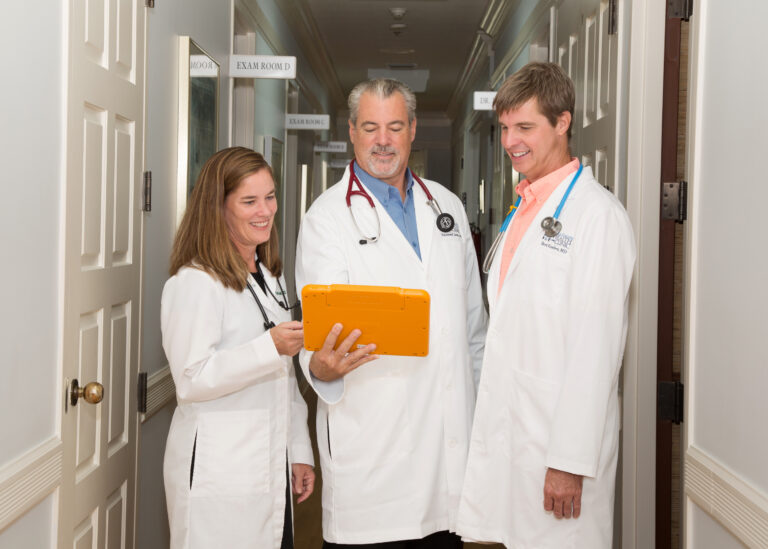
Is There Safety in Numbers? Thought About Gatherings and COVID-19 (By Popular Demand)

First, let’s start with a definition of a term we are all hearing thrown around a lot lately; herd immunity. Herd immunity is the resistance to the spread of a contagious disease within a population that results if a sufficiently high proportion of individuals are immune to the disease, through recovering from the illness or through vaccination. What is the threshold for herd immunity for COVID-19? The threshold for all infectious diseases is based on a calculation.
1-(1/R0) = the threshold for herd immunity
R0 (pronounced “R naught”) is the infectivity of the disease. That is, how many other people will one infected person infect. For COVID-19 this number has been determined to be 2-3. One infected person is expected to infect 2-3 other people. To put that into understandable context, one unchecked case of COVID-19 will lead to 31 more cases over the following four weeks if no precautions are taken. The incubation period, contact time (exposure) needed to infect and the route (or routes) of transmission are used to the calculate the R0. The goal is to get this number to less than one and the disease will extinguish itself.
The calculation then for COVID-19 (using 2.5 for R0) is 1-(1/2.5)= 0.6
This means that herd immunity should develop if 60% of the population become immune (through infection that leads to immunity or effective vaccination).
In order to decrease this threshold (make the number of immune persons to achieve herd immunity fewer), the R0 has to decrease. To decrease R0 (infectivity), infectious cases need to be promptly isolated and situations of high exposure need to be eliminated. The only variable in this equation we can affect is exposure. All other variables remain constant. The incubation period and route(s) of transmission are not adjustable. So, it’s all about R0. Decrease your exposures and you decrease your risk.
Enough already with the science. We’ve all gotten over the novelty of virtual happy hours and Zoom birthday parties and want to know if we can get together with our families and friends.
The risk stratifying table below might help with attending and/or planning an event. It is by no means all-inclusive and as in real life, many factors will fall into gray zones. Use it as a guide to determine how many of your “exposure points” you will be spending and if you are comfortable with the risk.

Questions to Ask as a Guest:
- Will everyone be asked to wear a face covering? Will distancing reminders be clearly marked?
- Will masks and sanitizer be readily available? Will attendance be limited?
- Will anyone from outside the area be attending? Will I be comfortable with my risk in this situation?
Politely decline the invitation if you are ill, have been exposed to someone ill or have recently traveled (long flight, returned from a “hot spot”, international travel or multi-state travel).
Guidance for hosting:
- Open windows and doors or stay outdoors (don’t forget insect and climate control).
- Clean and disinfect your venue before and after (pay special attention to common touch areas like light switches, doorknobs, faucets, flushers, cabinet pulls, refrigerator and garbage bin handles).
- Provide adequate space for appropriate distancing (have a seating chart). Limit your guest list.
- Have masks, sanitizer and disinfectant wipes readily available (at the entryway and strategically placed throughout the venue).
- Organize entertainment that allows for distancing (charades, distanced dancing, Bingo?).
- Considerations if a meal is planned (disposable place settings, including drink and flatware, seat households together, adequate spacing between tables, individual servings that are plated or served by a single (solitary, not unmarried!) masked attendant with clean hands. Consider a bring-your-own beach party (food and drink, place settings, chairs, beach blanket) Avoid finger foods or passing trays of hors d’oeuvres, serve individually plated cupcakes or key lime tarts for dessert.
- Graciously understand and expect some to decline the invitation.
Special Considerations:
- Bathrooms: Clear the air (use the exhaust fan), Cover (close the lid prior to flushing), Wash (your hands), Wipe (grab a disinfectant wipe to open the door and then wipe the outside knob too).
- Post the “rules” on a sign on the inside door of the bathroom. Have disinfectant wipes and soap supply replenished regularly. Have a foot pedal operated garbage can outside the door for the used disinfectant wipes.
- Verbalization: Louder, stronger, more forceful vocalization allows a greater amount of respiratory droplets of all sizes to be propelled into the environment and travel farther distances. Shouting, laughing, yawning, sighing, singing, choking, coughing and sneezing as well as talking and breathing are all thought to aerosolize viral particles.
- My pet peeve is the statement, “Face coverings are recommended when social distancing is not possible.” Studies have shown that shouting, coughing or laughing without a mask allows aerosolization of droplets 8-12 feet from the source. So, if you are not covering your face, stay at least 12 feet away from others.
- It is not one or the other; masking, distancing and handwashing together will help stop the spread of COVID-19.
Remember, no activity is zero risk. Our own choices impact others around us; make wise ones. We can do this safely with thought and innovation. Most importantly, be kind and respect your neighbor!
More Recent Healthcare News

Every year we celebrate Doctor’s Day and Nurses Week, but there’s one more recognition event that’s just as important. Administrative Professionals Day is April 24th this year and I want to be sure to bring special attention to three incredibly special members of the Boca Grande Health Clinic family. Jonna Foos, Director of Operations Jonna […]

April, the birth month of James Parkinson, is Parkinson’s Disease Awareness Month. Parkinson’s is a degenerative syndrome that results in the gradual loss of brain circuitry involved in movement, thinking and behavior. According to the National Institutes of Health (NIH), the first clear medical description of Parkinson’s Disease as a neurological condition was written in […]

March 30th marks a special day on our calendar – Doctor’s Day! It’s a time to honor those who dedicate their lives to caring for us. At the Boca Grande Health Clinic, it’s the extraordinary team of board-certified physicians – Dr. Raymond A. James, our Medical Director; Dr. Bret Kueber, the Assistant Medical Director; and […]

Ask a Doc: Kicking Colon Cancer in the Butt
March 22, 2024According to the American Cancer Society, the lifetime risk of developing colorectal cancer is about 1 in 23 for men and 1 in 25 for women. The death rate from colorectal cancer has been dropping in older adults for several decades. Unfortunately, colorectal cancers now rank as the leading cause of cancer death in men […]
